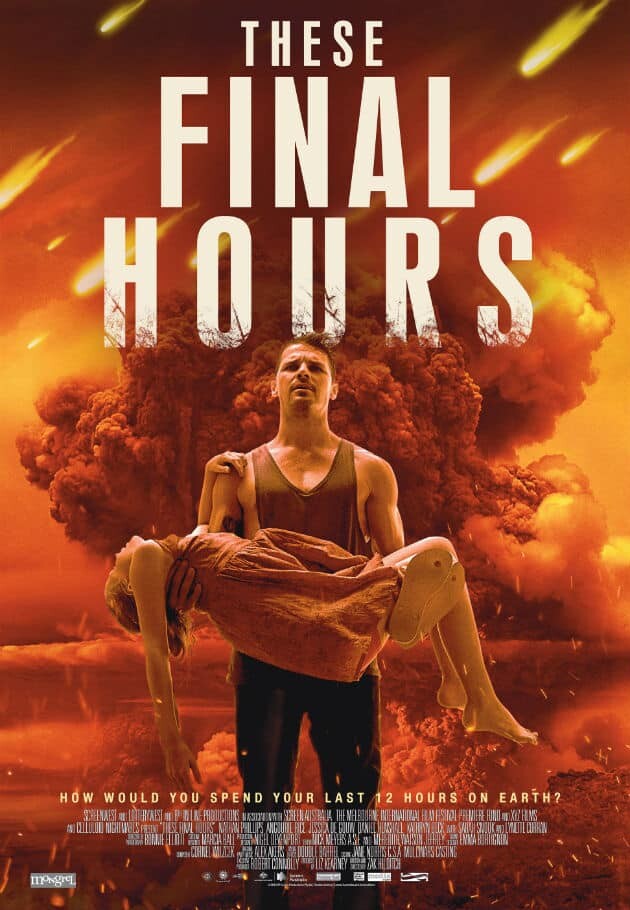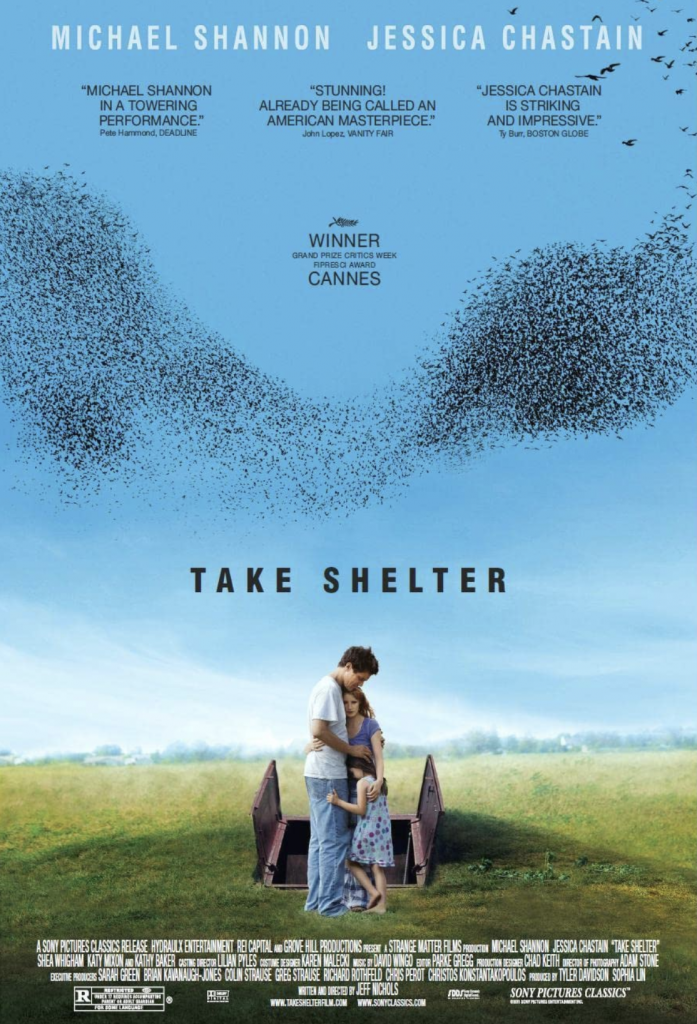Remember when everybody thought the world would end in 2012? Nearly a decade later and we’re still here, but the terrifying apocalyptic movies will never stop… and we like it that way. These films are the ideal combination of action, suspense, and horror – watching society unravel as the main characters quite literally run for their lives, often to no avail. What would you do if you were simply getting your hair done at the salon, when buildings started to collapse all around you? Is there any imaginable way to escape a natural disaster of this capacity? Answer these questions and get a fix of apocalyptic horror with these top-rated films about the end of the world.
These Final Hours (2015)

If you found out the world was ending, what’s the first thing you would do? Some would say goodbye to their loved ones or chill out with Netflix and good food, but the protagonist in These Final Hours wants to party. And party hard. The film begins in Perth, Australia as an asteroid collides with Earth, with about twelve hours to go until a firestorm reaches the country. James wants to experience the “party to end all parties” before he exits the planet, but things take a unique turn as he meets new people and comes across terrifying things. This is definitely one of the most underrated end-of-the-world thrillers, ever.
Take Shelter (2011)

The end of the world is even more terrifying when it’s all happening inside your head, and that’s exactly what happens to Curtis LaForche in this apocalyptic thriller. He sees raindrops made of oil and swarms of black birds, while nobody else does… and his increasing anxiety and strange behavior begins to cause issues with his job, family, and life. Is he simply going through a rough time period, struggling with mental illness, or foreshadowing a future disaster? You’ll have to watch this Jessica Chastain thriller (her specialty) and find out.
2012 (2009)

For many years, there were conspiracy theories about the world ending in 2012, as this was the conclusion of the Mesoamerican Long Count calendar. Obviously, it didn’t happen… but we did get a pretty sweet disaster movie out of it. Released in 2009, this film centers around Jackson Curtis and his attempts to save his family from impending doom. And by that, we mean a series of natural disasters that are slowly crumbling the Earth and killing off the population. This film has the ideal combination of action and scares, and you can sleep easy knowing that we all survived the year 2012.
I Am Legend (2007)

I hope you are enjoying the apocalypse. So what do you do when 90% of the Earth’s population is killed by a virus, while you’re the 1% who lives and the other 9% are terrifying mutants who want to kill you? Ask scientist Robert Neville, who is living a post-apocalyptic life in the ruins of Manhattan. Will Smith gives a breathtaking performance as he tries to survive and find a cure for the virus, while tracking down any fellow survivors and trying not to get attacked by the mutants. As you can imagine, it’s an eventful film!
Children of Men (2006)

The premise of this film is quite simple. Humans have mysteriously become infertile and society is quickly (and not so quietly) dying out. There are less natural disasters and more quiet moments of fear, but Children of Men still has plenty of action. When a woman is believed to be pregnant, it becomes a symbol of hope for society… and the film follows a group of people as they do whatever it takes to stay alive.
World War Z (2013)

Brad Pitt spending a nearly 2 hour movie trying to stop a zombie pandemic, and looking amazing doing it? That’s why you need to watch World War Z. Pitt stars as Gerry Lane, a former United Nations agent who is assigned to gather clues about how to stop zombies from taking over the planet – guided by his duty to his job and need to protect his family. This movie is based on the 2006 novel World War Z, which you should also check out! If Brad Pitt can’t make the apocalypse fun who can?
28 Days Later (2002)

This film hits a bit close to home in 2021, as it centers around four individuals trying to rebuild their life after a contagious virus hits and destroys society as they once knew it. Before there was Bird Bo or The Quiet Place, there was 28 Days Later… as this film shows the survivors trying to cope with their losses while avoiding the zombies that could possibly infect them. Among many, many other things. Some critics even say that it revived the zombie genre all the way back in 2002!

I am a lifelong pop culture junkie with immense passion for all forms of art and entertainment. On a typical weekend, I can be found at a concert or musical, chasing ghosts on the Haunted Mansion at Disneyland, or watching way too many makeup tutorials on YouTube.
